 Technology peripherals
Technology peripherals
 AI
AI
 Stanford president was exposed for academic misconduct and is under investigation by the school! 11 papers suspected of 'tampering with images'
Stanford president was exposed for academic misconduct and is under investigation by the school! 11 papers suspected of 'tampering with images'
Stanford president was exposed for academic misconduct and is under investigation by the school! 11 papers suspected of 'tampering with images'
Is Stanford University investigating its president for academic misconduct?
Recently, Stanford University announced a formal investigation into neuroscientist Marc Tessier-Lavigne, the president of the school, due to suspicion of "tampering with images."
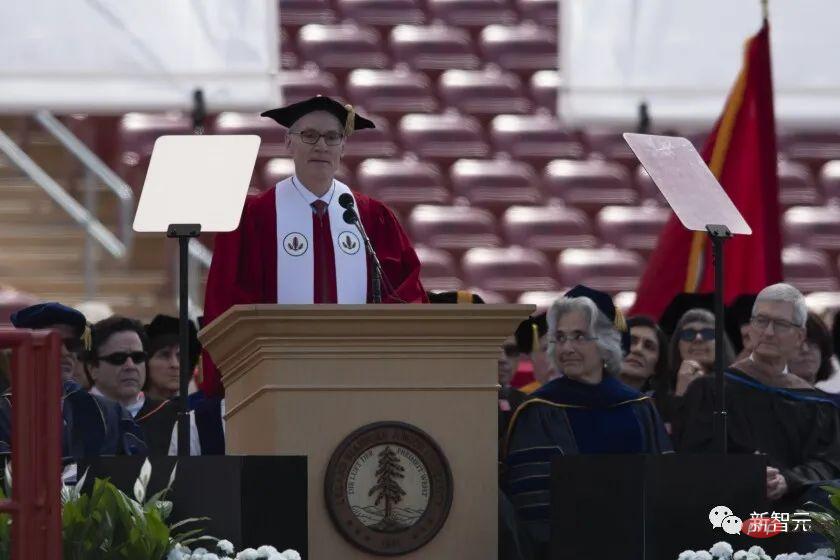

Stanford University officials said in a statement: "The school will begin to evaluate the reported information and will take the same steps as it does when investigating other allegations of academic misconduct. , operate with the same strictness."
In this regard, Tessier-Lavigne said: "Scientific integrity is the most important to the school and me personally, and I will fully cooperate with this investigation. .》
Article address: https://www.science.org/content/article/stanford-investigates-potential -misconduct-president-s-research
The papers reviewed include two Science papers from 2001, one Nature paper from 2003, and one from 2008 EMBO Journal (Journal of the European Society for Molecular Biology) paper, and a 1999 Cell paper. However, these articles were published before he came to Stanford.

Paper address: https://www.science. org/doi/10.1126/science.1058445
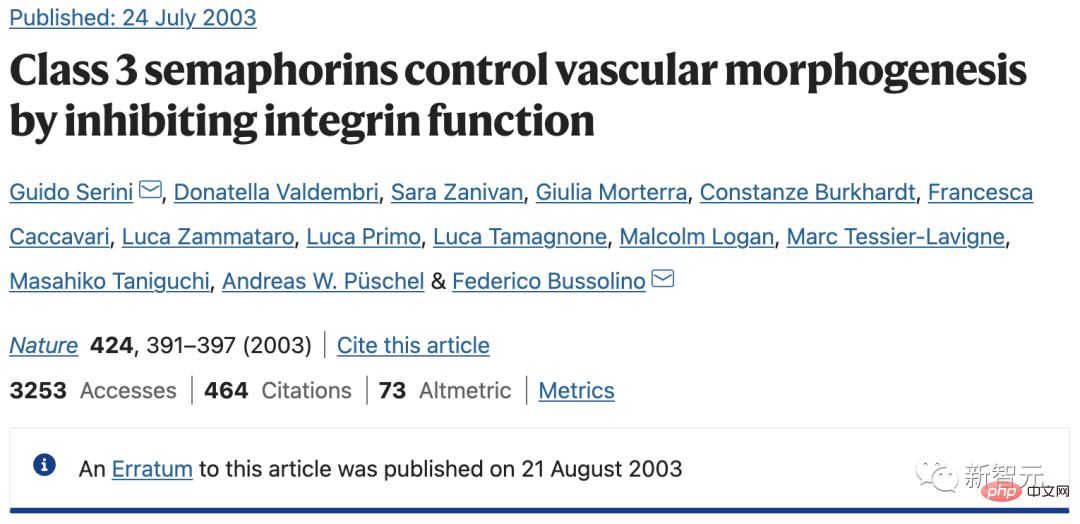 ##
##
Paper address: https://www.science.org/doi/10.1126/science.1059391
##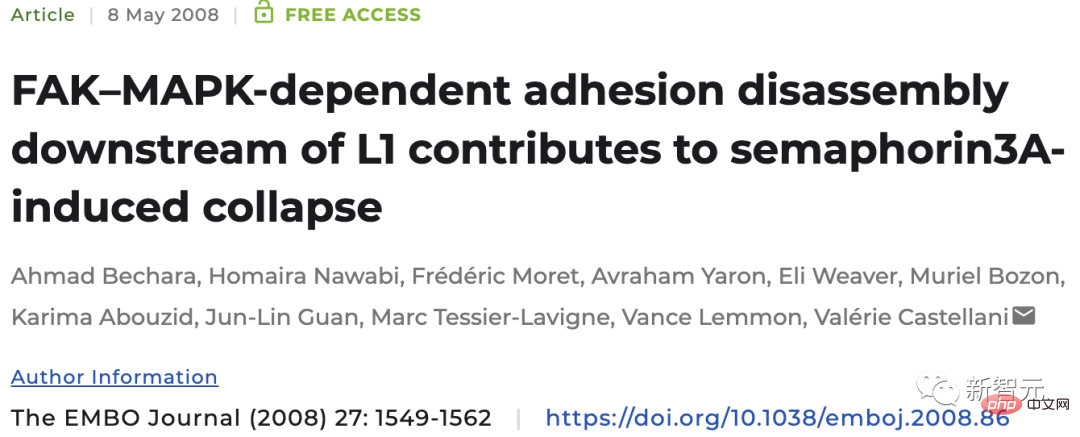
Paper address: https://www.nature.com/articles/nature01784

Paper address: https://www.embopress.org/doi/full/10.1038/emboj.2008.86
Paper address: https://www.cell.com/cell/fulltext/S0092-8674(00)80804-1
At first , while Stanford acknowledged there were problems in the papers, it downplayed Tessier-Lavigne's role in the potential misconduct in a statement:
At the time, spokesperson Dee Mostofi said the errors Either it does not involve Tessier-Lavigne or it "does not affect the interpretation of the data, results, or paper."
######However, as the incident gradually unfolded, Stanford later changed its tune and stated that the school would conduct an investigation overseen by the school's board of trustees. ######### Questions were raised 7 years ago ######### On PubPeer, scientists often comment anonymously on possible problems with published research. have a discussion. ######The "image error" that appeared in Tessier-Lavigne's paper also appeared for the first time on this website.
Some of these posts noted that various Western blots documenting the presence of proteins were repeated in more than one image or had been modified.
Of course, without conclusive evidence, these problems do not necessarily mean that the author has committed academic misconduct, and may just be unintentional mistakes.
However, the number seems to be slightly more, a total of 11 articles...
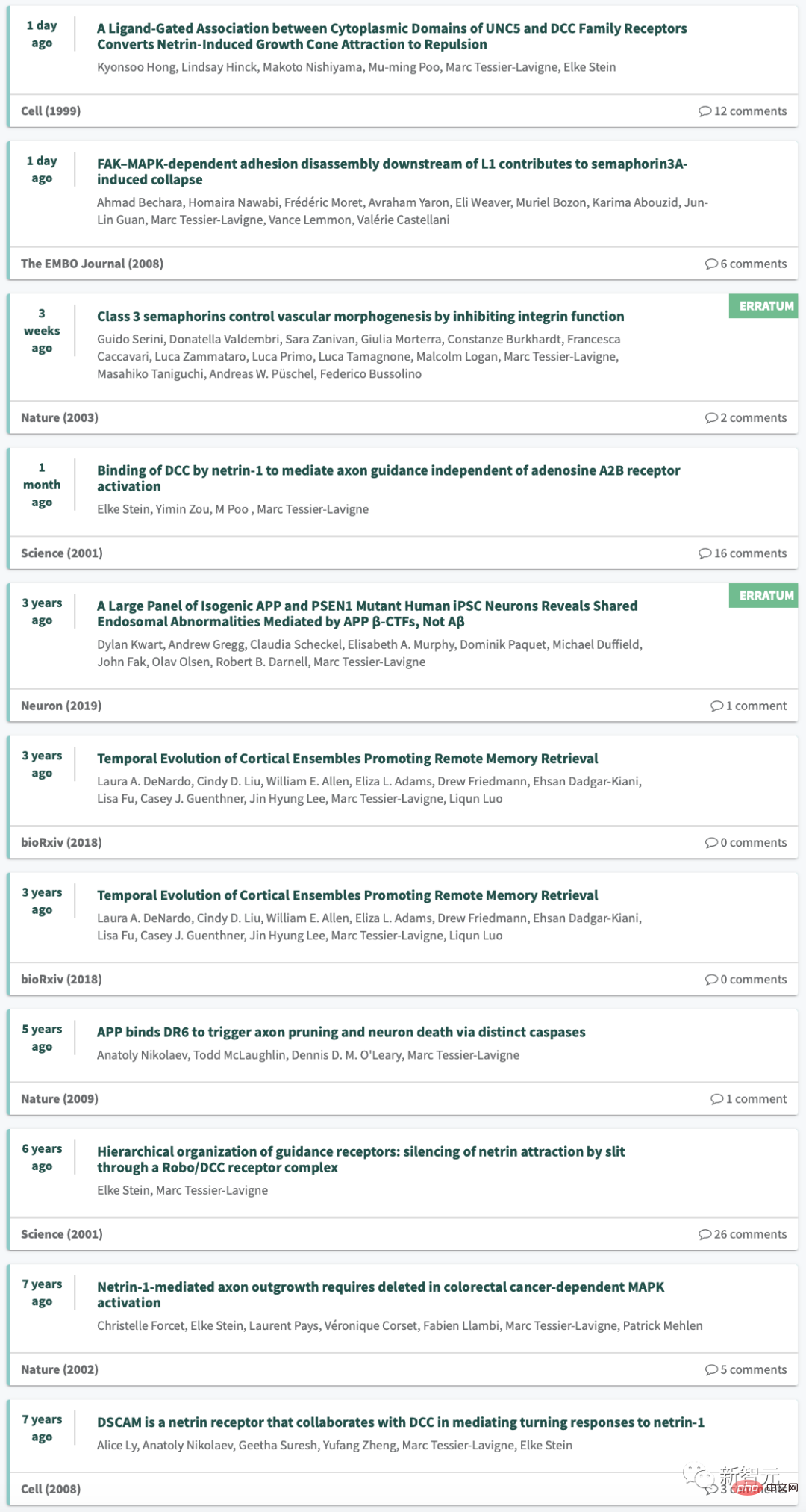
##" As the third author of the EMBO paper, President Tessier-Lavigne is included solely to recognize his contribution in providing necessary reagents for other authors' research," Stanford said.
Co-authorship usually means more direct involvement. Yale University's academic guidelines, for example, state that co-authors of academic publications should be "directly involved...in writing drafts of the article" and must "review and confirm the manuscript before it is submitted for publication."
It seems that just providing the reagent and naming the author seems a bit unqualified.
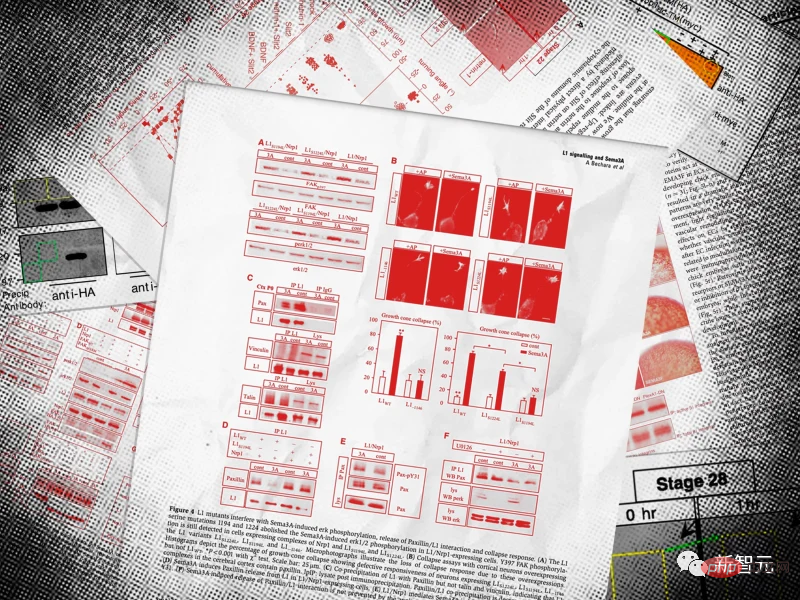
Interestingly, Tessier-Lavigne, who was still working at the University of California, San Francisco (UCSF), reported to Cell as early as 2015 Errors in the paper that the editor of the journal deem unnecessary to correct.
The editor-in-chief of Science, Holden Thorp, recently admitted that Tessier-Lavigne had submitted corrections to two papers in Science magazine in October 2015, but "because of an error," Science These corrections have not been published.
In a statement, Thorp expressed his "apology" to the academic community: "We regret this error and will share our next steps related to these two papers as soon as possible. ."
Rare: Top journal publicly admits that it is "under investigation"EMBO journal wrote in a public article last week that it is investigating a 2008 article Allegations of the paper on receptors in the brain.

In fact, it is rare for academic journals to openly acknowledge such surveys. EMBO is frequently ranked as the top journal in the field by Scimago journal rankings and receives nearly 3,000 submissions each year. The journal has retracted papers based on PubPeer allegations in the past, but did not acknowledge an ongoing investigation before retracting.
This indicates that the public announcement of this news may mean that the investigation has been ongoing for some time.
It is unclear how long the investigation will take, and even if the final result shows that Tessier-Lavigne did not commit academic misconduct, the investigation itself will have serious consequences for him.
In the past, well-known German researcher Silvia Bulfon-Paus was found to have tampered with images in several papers in 2011 (Bulfon-Paus blamed two of her postdoctoral fellows staff) and was later forced to resign as director of the Borstel Institute.
Ohio State University professor Carlo Croce was dogged by similar accusations in 2017. Earlier this year, an official investigation by the school found that he himself had not doctored the images, but he was later disciplined due to "management issues" and two of his researchers were identified as fakers and fired.
2019 Nobel Prize winner Gregg Semenza retracted 17 papers after accusations were made on PubPeer.
Currently, Tessier-Lavigne’s papers confirmed by Stanford University as “problematic” have been downloaded tens of thousands of times, including some of his most cited work in neurobiology. None of these papers have been retracted or corrected.
Tessier-Lavigne's work in the 1990s first identified the molecules needed to guide axons, opening up a new field of research.
Before taking over as president of Stanford University in early 2016, Tessier-Lavigne mentored more than 1,000 scientists at biotech companies Genentech and Regeneron.
In 2014, Tessier-Lavigne’s annual salary at Regeneron was more than $1.5 million. In 2021, he served as president of Stanford and as a director of Regeneron’s board of directors, he also received an annual salary of $700,000.
Some experts say that scientific journals and institutions have historically been unwilling to investigate alleged academic misconduct, especially the behavior of powerful scientists. Even when journals respond, investigations are slow, bureaucratic and often completely confidential, according to several researchers familiar with the retraction process.
Pictures frequently show signs of tampering: mirroring, copying, rotating, shifting...
In the eyes of biologist and scientific misconduct investigator Elisabeth Bik It turns out that the pictures in the paper investigated by EMBO show signs of deliberate manipulation and will mislead readers.
As a veteran who has observed academic misconduct for many years, Bik has rich experience. He has investigated more than 20,000 papers in the past, of which nearly 1,000 were retracted, and roughly the same number of papers were corrected. , can be called the "anti-counterfeiting expert" in the American biological academic community.
Bik said the problems she observed in EMBO papers varied in complexity. For example, one plate in a diagram appears to be copied directly and completely from another plate. This is what she calls a "Type 1 error": usually the most common typesetting error, or an accidental mistake when stitching together pictures.
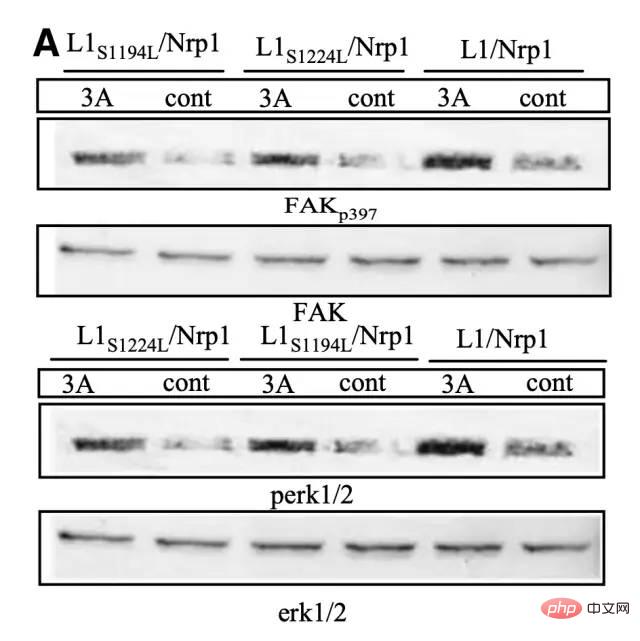
You can see two sets of traces of repeated use (taken from the EMBO paper, 2008)
But other picture problems are more complicated. For example, in the picture below, Bik said that a gel band in the color box in the picture seems to be the result of direct "copy flipping". She said this duplication within the same section may have been an attempt to dispel suspicions that the images were manipulated.
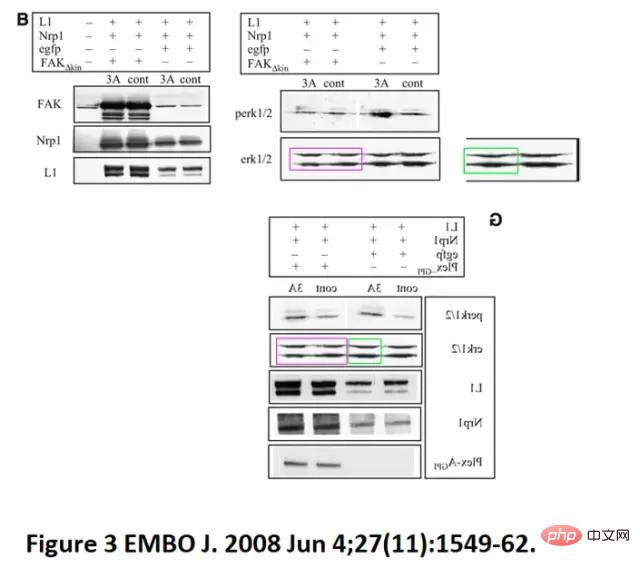
A gel band appears to be mirrored, flipped and reused in the same image (excerpt from EMBO paper, 2008)
In another paper published in Science in 2003, Tessier-Lavigne was listed as the fourth of 14 authors. The article contained a series of articles described as Pictures that are different from each other. But according to Bik, they actually look like the same image, just rotated.
"This spin may have misleading intent," Bik said.
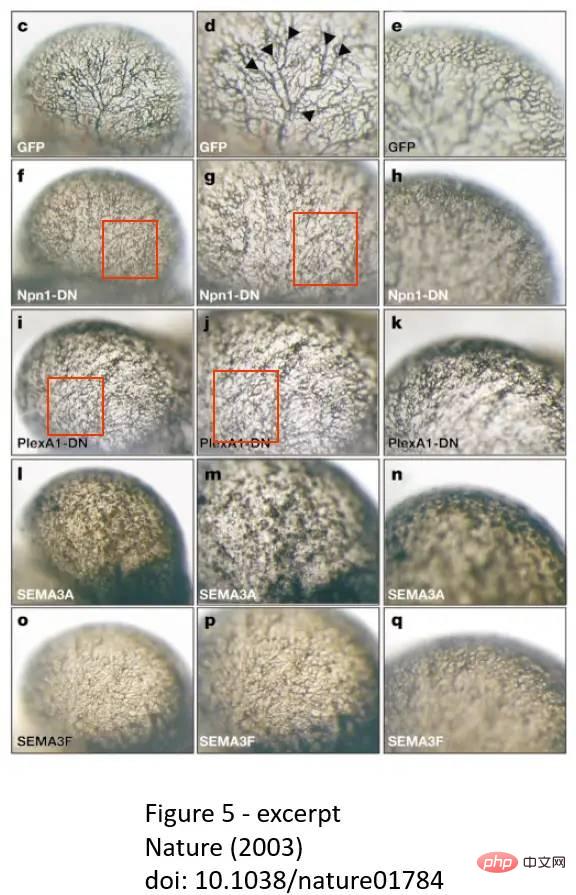
The pictures that are supposed to represent different experimental results seem to be rotations of the same picture and are used repeatedly (taken from the Nature paper , 2003)
As for the pictures in the 2001 Science paper, there were several unexplained shifts and duplications, which seemed to highlight more Deliberately doing good (or masking worse) experimental results.
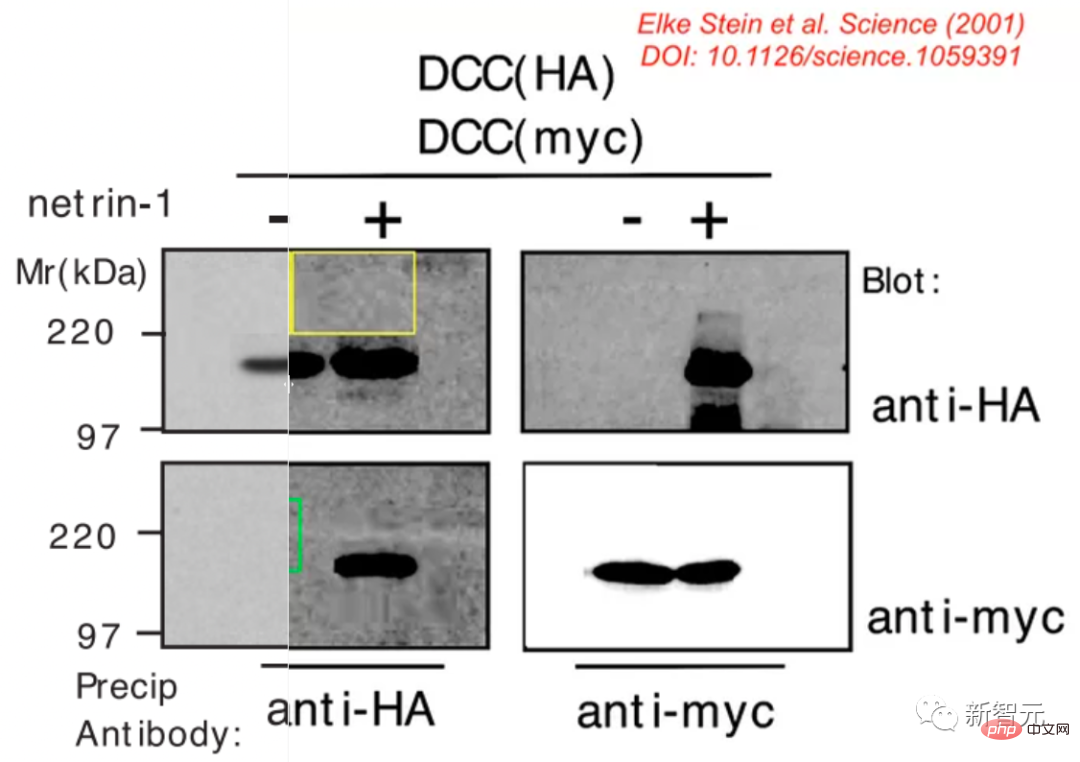
The texture details in several places seem to have been modified (taken from Science, 2001)
Bik believes that this may be It is a way to avoid certain undesirable consequences.
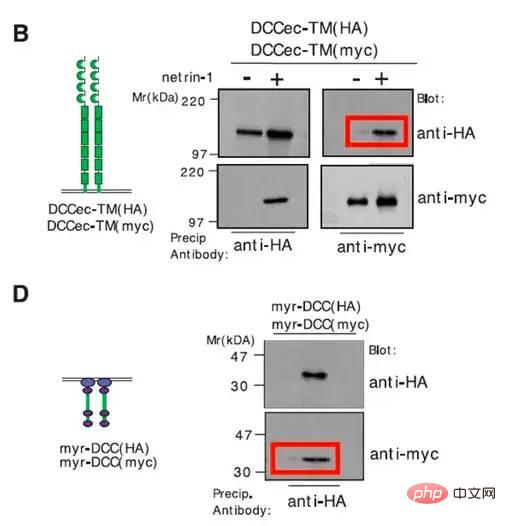
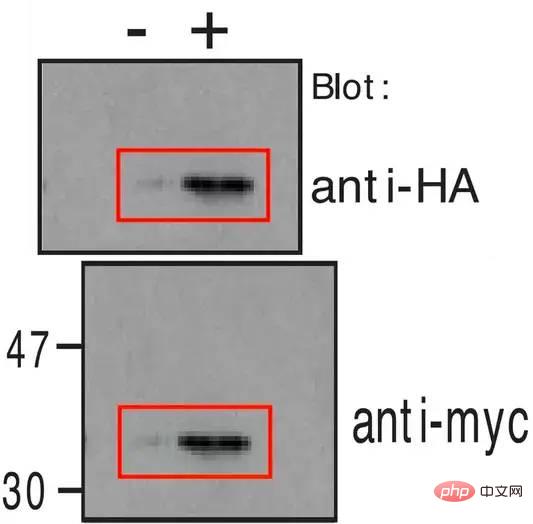
The blots in Figures B and D were obtained by copying (taken from Science , 2001)
In this regard, some scholars pointed out that original data are often discarded by researchers, especially those papers published a long time ago.
It can be said that it is an almost impossible task to compare the possibly tampered images with the original images many years later and use them to determine the ownership of the responsibility.
The above is the detailed content of Stanford president was exposed for academic misconduct and is under investigation by the school! 11 papers suspected of 'tampering with images'. For more information, please follow other related articles on the PHP Chinese website!

Hot AI Tools

Undresser.AI Undress
AI-powered app for creating realistic nude photos

AI Clothes Remover
Online AI tool for removing clothes from photos.

Undress AI Tool
Undress images for free

Clothoff.io
AI clothes remover

Video Face Swap
Swap faces in any video effortlessly with our completely free AI face swap tool!

Hot Article

Hot Tools

Notepad++7.3.1
Easy-to-use and free code editor

SublimeText3 Chinese version
Chinese version, very easy to use

Zend Studio 13.0.1
Powerful PHP integrated development environment

Dreamweaver CS6
Visual web development tools

SublimeText3 Mac version
God-level code editing software (SublimeText3)

Hot Topics
 The Stable Diffusion 3 paper is finally released, and the architectural details are revealed. Will it help to reproduce Sora?
Mar 06, 2024 pm 05:34 PM
The Stable Diffusion 3 paper is finally released, and the architectural details are revealed. Will it help to reproduce Sora?
Mar 06, 2024 pm 05:34 PM
StableDiffusion3’s paper is finally here! This model was released two weeks ago and uses the same DiT (DiffusionTransformer) architecture as Sora. It caused quite a stir once it was released. Compared with the previous version, the quality of the images generated by StableDiffusion3 has been significantly improved. It now supports multi-theme prompts, and the text writing effect has also been improved, and garbled characters no longer appear. StabilityAI pointed out that StableDiffusion3 is a series of models with parameter sizes ranging from 800M to 8B. This parameter range means that the model can be run directly on many portable devices, significantly reducing the use of AI
 ICCV'23 paper award 'Fighting of Gods'! Meta Divide Everything and ControlNet were jointly selected, and there was another article that surprised the judges
Oct 04, 2023 pm 08:37 PM
ICCV'23 paper award 'Fighting of Gods'! Meta Divide Everything and ControlNet were jointly selected, and there was another article that surprised the judges
Oct 04, 2023 pm 08:37 PM
ICCV2023, the top computer vision conference held in Paris, France, has just ended! This year's best paper award is simply a "fight between gods". For example, the two papers that won the Best Paper Award included ControlNet, a work that subverted the field of Vincentian graph AI. Since being open sourced, ControlNet has received 24k stars on GitHub. Whether it is for diffusion models or the entire field of computer vision, this paper's award is well-deserved. The honorable mention for the best paper award was awarded to another equally famous paper, Meta's "Separate Everything" ”Model SAM. Since its launch, "Segment Everything" has become the "benchmark" for various image segmentation AI models, including those that came from behind.
 Chat screenshots reveal the hidden rules of AI review! AAAI 3000 yuan is strong accept?
Apr 12, 2023 am 08:34 AM
Chat screenshots reveal the hidden rules of AI review! AAAI 3000 yuan is strong accept?
Apr 12, 2023 am 08:34 AM
Just as the AAAI 2023 paper submission deadline was approaching, a screenshot of an anonymous chat in the AI submission group suddenly appeared on Zhihu. One of them claimed that he could provide "3,000 yuan a strong accept" service. As soon as the news came out, it immediately aroused public outrage among netizens. However, don’t rush yet. Zhihu boss "Fine Tuning" said that this is most likely just a "verbal pleasure". According to "Fine Tuning", greetings and gang crimes are unavoidable problems in any field. With the rise of openreview, the various shortcomings of cmt have become more and more clear. The space left for small circles to operate will become smaller in the future, but there will always be room. Because this is a personal problem, not a problem with the submission system and mechanism. Introducing open r
 Paper illustrations can also be automatically generated, using the diffusion model, and are also accepted by ICLR.
Jun 27, 2023 pm 05:46 PM
Paper illustrations can also be automatically generated, using the diffusion model, and are also accepted by ICLR.
Jun 27, 2023 pm 05:46 PM
Generative AI has taken the artificial intelligence community by storm. Both individuals and enterprises have begun to be keen on creating related modal conversion applications, such as Vincent pictures, Vincent videos, Vincent music, etc. Recently, several researchers from scientific research institutions such as ServiceNow Research and LIVIA have tried to generate charts in papers based on text descriptions. To this end, they proposed a new method of FigGen, and the related paper was also included in ICLR2023 as TinyPaper. Picture paper address: https://arxiv.org/pdf/2306.00800.pdf Some people may ask, what is so difficult about generating the charts in the paper? How does this help scientific research?
 NeRF and the past and present of autonomous driving, a summary of nearly 10 papers!
Nov 14, 2023 pm 03:09 PM
NeRF and the past and present of autonomous driving, a summary of nearly 10 papers!
Nov 14, 2023 pm 03:09 PM
Since Neural Radiance Fields was proposed in 2020, the number of related papers has increased exponentially. It has not only become an important branch of three-dimensional reconstruction, but has also gradually become active at the research frontier as an important tool for autonomous driving. NeRF has suddenly emerged in the past two years, mainly because it skips the feature point extraction and matching, epipolar geometry and triangulation, PnP plus Bundle Adjustment and other steps of the traditional CV reconstruction pipeline, and even skips mesh reconstruction, mapping and light tracing, directly from 2D The input image is used to learn a radiation field, and then a rendered image that approximates a real photo is output from the radiation field. In other words, let an implicit three-dimensional model based on a neural network fit the specified perspective
 The Chinese team won the best paper and best system paper awards, and the CoRL research results were announced.
Nov 10, 2023 pm 02:21 PM
The Chinese team won the best paper and best system paper awards, and the CoRL research results were announced.
Nov 10, 2023 pm 02:21 PM
Since it was first held in 2017, CoRL has become one of the world's top academic conferences in the intersection of robotics and machine learning. CoRL is a single-theme conference for robot learning research, covering multiple topics such as robotics, machine learning and control, including theory and application. The 2023 CoRL Conference will be held in Atlanta, USA, from November 6th to 9th. According to official data, 199 papers from 25 countries were selected for CoRL this year. Popular topics include operations, reinforcement learning, and more. Although CoRL is smaller in scale than large AI academic conferences such as AAAI and CVPR, as the popularity of concepts such as large models, embodied intelligence, and humanoid robots increases this year, relevant research worthy of attention will also
 CVPR 2023 rankings released, the acceptance rate is 25.78%! 2,360 papers were accepted, and the number of submissions surged to 9,155
Apr 13, 2023 am 09:37 AM
CVPR 2023 rankings released, the acceptance rate is 25.78%! 2,360 papers were accepted, and the number of submissions surged to 9,155
Apr 13, 2023 am 09:37 AM
Just now, CVPR 2023 issued an article saying: This year, we received a record 9155 papers (12% more than CVPR2022), and accepted 2360 papers, with an acceptance rate of 25.78%. According to statistics, the number of submissions to CVPR only increased from 1,724 to 2,145 in the 7 years from 2010 to 2016. After 2017, it soared rapidly and entered a period of rapid growth. In 2019, it exceeded 5,000 for the first time, and by 2022, the number of submissions had reached 8,161. As you can see, a total of 9,155 papers were submitted this year, indeed setting a record. After the epidemic is relaxed, this year’s CVPR summit will be held in Canada. This year it will be a single-track conference and the traditional Oral selection will be cancelled. google research
 Alumni of Shanghai Jiao Tong University won the best paper, and the awards for CoRL 2022, the top robotics conference, were announced
Apr 11, 2023 pm 11:43 PM
Alumni of Shanghai Jiao Tong University won the best paper, and the awards for CoRL 2022, the top robotics conference, were announced
Apr 11, 2023 pm 11:43 PM
Since it was first held in 2017, CoRL has become one of the world's top academic conferences at the intersection of robotics and machine learning. CoRL is a single-track conference for robot learning research, covering multiple topics such as robotics, machine learning and control, including theory and applications. The 2022 CoRL Conference will be held in Auckland, New Zealand, from December 14th to 18th. This conference received a total of 504 submissions, and finally accepted 34 Oral papers and 163 Poster papers, with an acceptance rate of 39%. Currently, CoRL 2022 has announced all awards including the Best Paper Award, Best System Paper Award, and Special Innovation Award. GRASP experiment at the University of Pennsylvania





